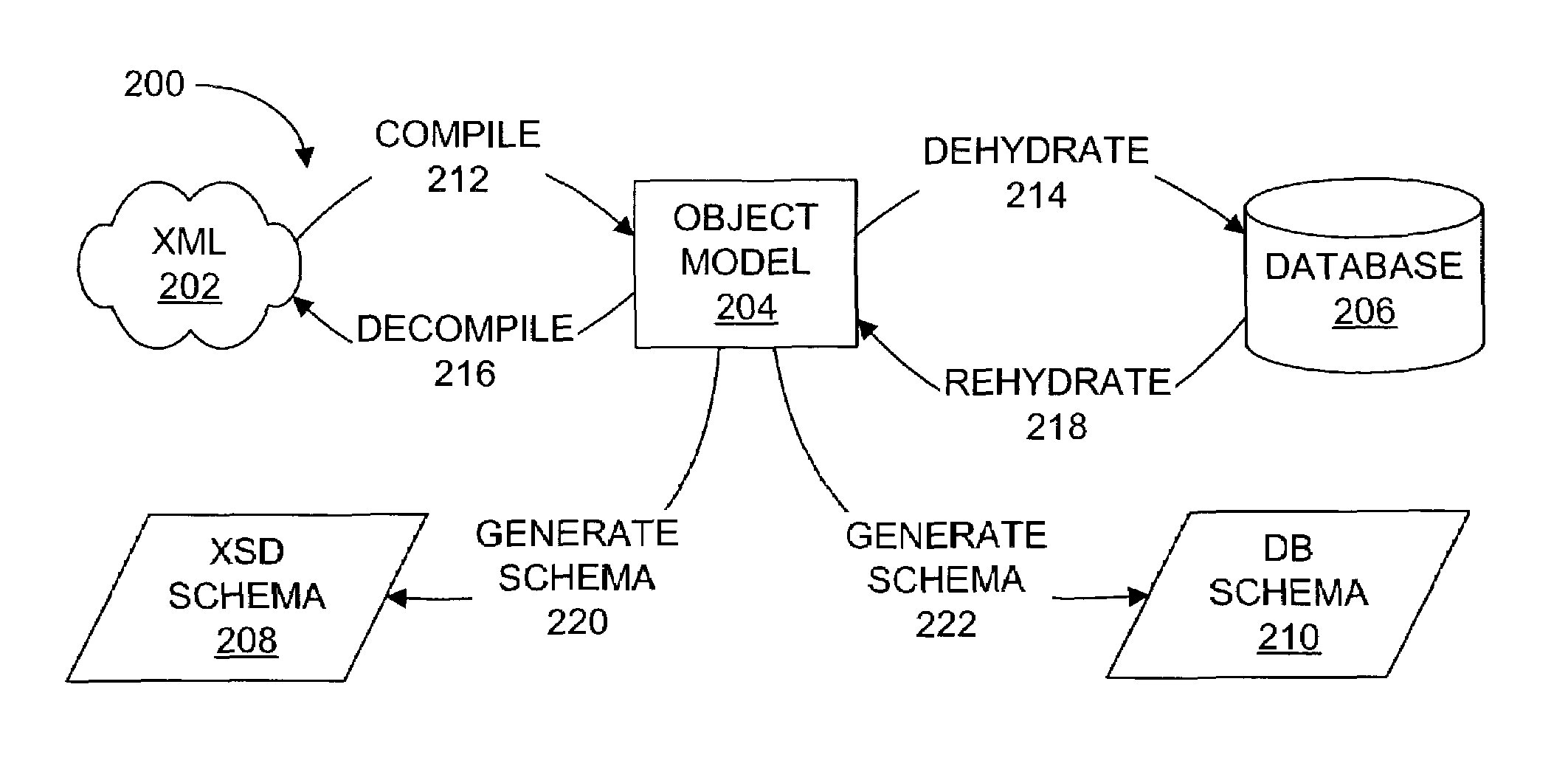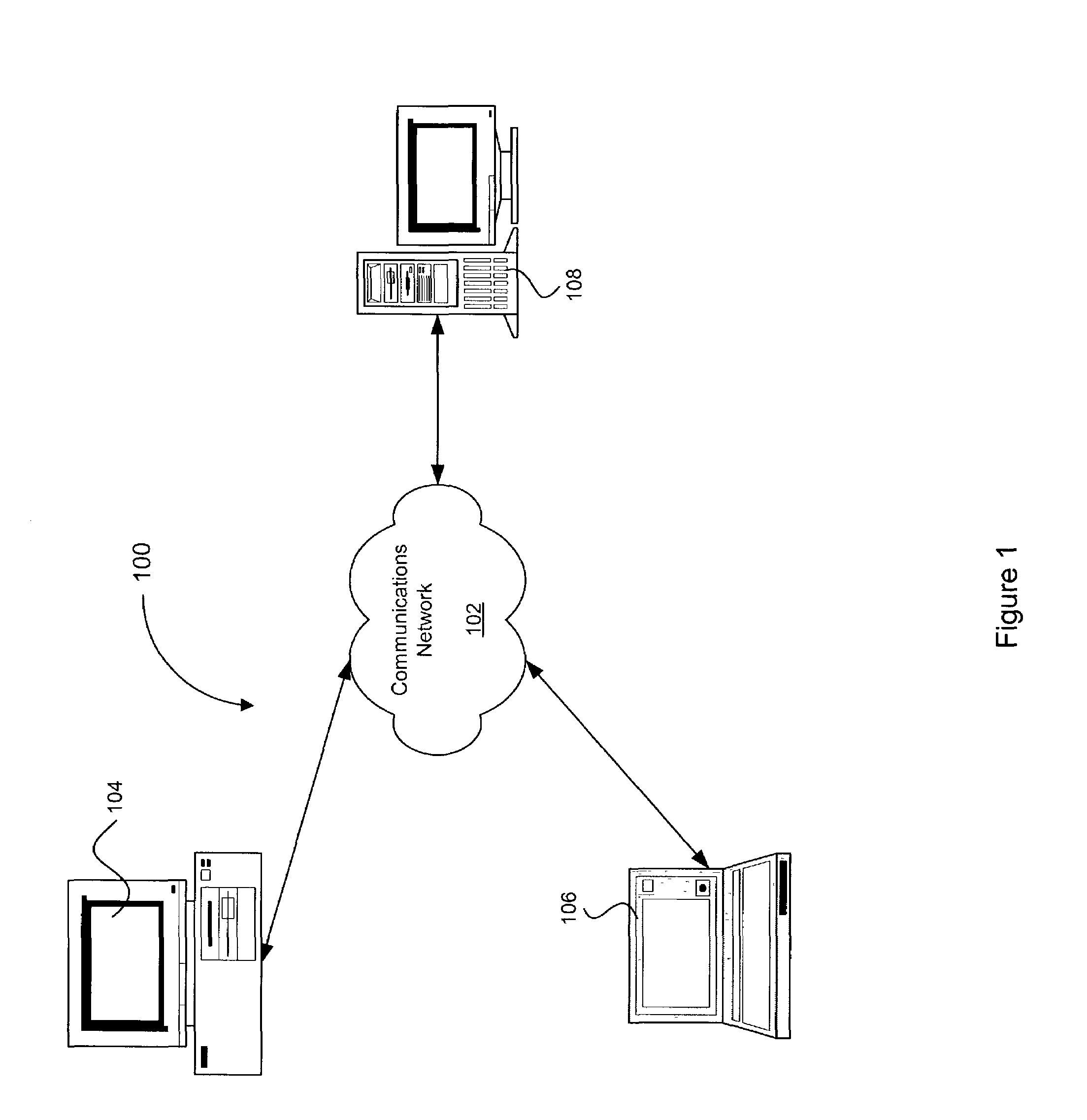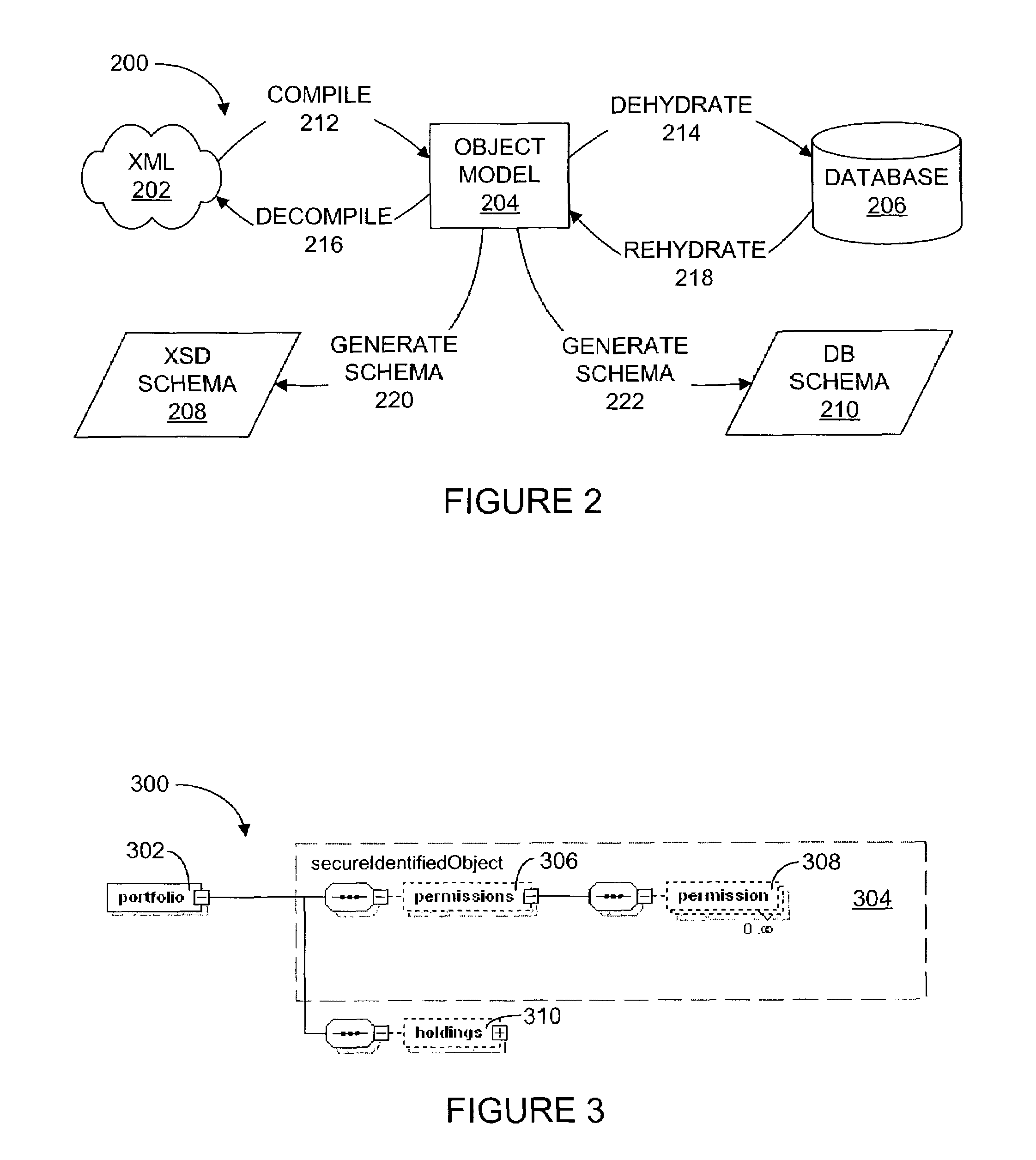Framework for applying operations to nodes of an object model
a node model and object technology, applied in the field of data structure and objectoriented computer programming, can solve the problems of inability to scale well, complex data structure, and relatively difficult management, and achieve the effects of reducing development costs, facilitating incorporation, and relieving developers
- Summary
- Abstract
- Description
- Claims
- Application Information
AI Technical Summary
Benefits of technology
Problems solved by technology
Method used
Image
Examples
Embodiment Construction
I. Exemplary Operating Environment
[0025]Aspects of the invention are suitable for use in a variety of computing system environments, including distributed computing environments. In distributed computing environments, tasks may be performed by remote computer devices that are linked through communications networks. Embodiments of the invention may comprise special purpose and / or general purpose computer devices that each may include standard computer hardware such as a central processing unit (CPU) or other processing means for executing computer executable instructions, computer readable media for storing executable instructions, a display or other output means for displaying or outputting information, a keyboard or other input means for inputting information, and so forth. Examples of suitable computer devices include hand-held devices, multiprocessor systems, microprocessor-based or programmable consumer electronics, networked PCs, minicomputers, mainframe computers, and the like...
PUM
 Login to View More
Login to View More Abstract
Description
Claims
Application Information
 Login to View More
Login to View More - R&D
- Intellectual Property
- Life Sciences
- Materials
- Tech Scout
- Unparalleled Data Quality
- Higher Quality Content
- 60% Fewer Hallucinations
Browse by: Latest US Patents, China's latest patents, Technical Efficacy Thesaurus, Application Domain, Technology Topic, Popular Technical Reports.
© 2025 PatSnap. All rights reserved.Legal|Privacy policy|Modern Slavery Act Transparency Statement|Sitemap|About US| Contact US: help@patsnap.com



